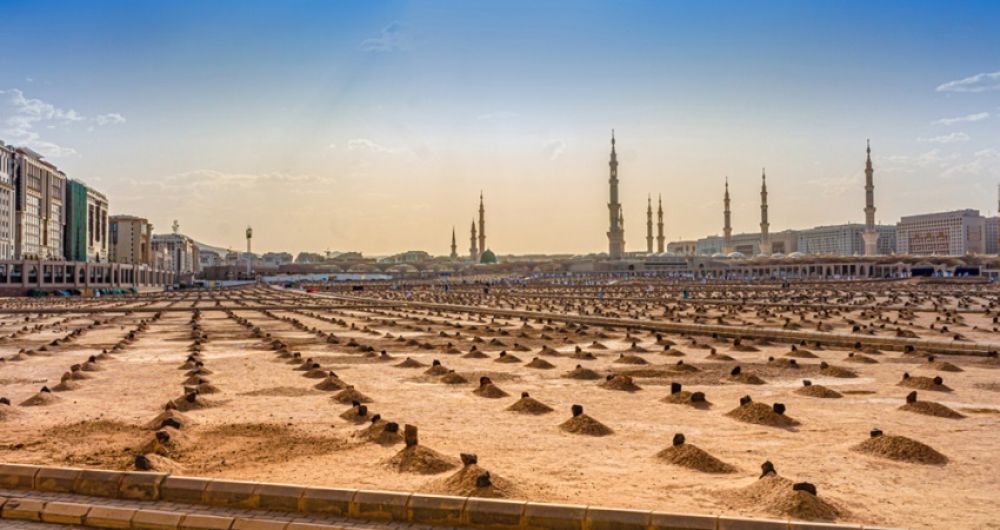

Medina, also known as Madinah, is home to Jannat al-Baqi, one of the most important cemeteries in the Islamic world. Its significance is derived from the fact that it is the final resting place of many relatives and companions of the Prophet Muhammad. The cemetery's history is deeply intertwined with the early Islamic era, with the first companion buried here being As’ad bin Zararah, an Ansari companion of the Prophet, shortly after the Hijra (migration of the Prophet from Mecca to Medina).
Over time, Jannat al-Baqi became the resting place for many significant figures in Islam, including the Prophet’s son, Ibrahim, his wives who are known as the “Mothers of the Believers,” and many other companions. It reflects centuries of Islamic history and is regarded as a sacred site, visited by thousands of pilgrims every year, especially during the Hajj season.
Tourism in the context of Jannat al-Baqi is primarily religious. The cemetery has been a site of visitation as part of the pilgrimage rituals associated with the Hajj and Umrah for centuries. Initially, the visits were mostly limited to Muslim pilgrims. Accessibility has changed over time, with varying rules and restrictions placed on visitations by the Saudi government in accordance with religious and political considerations.
In 1925, Jannat al-Baqi underwent drastic changes when it was demolished by the Saudi authorities due to their interpretation of Islamic teachings against such structures over graves. This act transformed the appearance of the cemetery but did not diminish its religious and historical significance. The cemetery continues to be an integral part of the religious tourism to Medina.
In recent years, there has been an increased interest in Islamic heritage tourism, with initiatives by the Saudi government to open up the country more to international tourists. This includes easing visa restrictions and improving infrastructure around religious sites to accommodate the growing number of visitors.
The concept of “Halal Tourism” has also taken hold, with travel agencies and tour organizers offering packages that cater specifically to the needs of Muslim travelers. Such packages often include visits to Jannat al-Baqi as part of a broader spiritual and cultural exploration of Medina and other key Islamic sites.
With the launch of the Saudi Vision 2030, there is a push to diversify the country’s economy, which includes a strategy to develop the tourism sector. This initiative aims to showcase Saudi Arabia’s cultural heritage, and religious sites such as Jannat al-Baqi play a vital role in this.
While visiting Jannat al-Baqi, it is important to remember that it is a sacred place of great respect within Islam. Visitors are expected to dress modestly and behave with the reverence suitable for a religious site. Note that the cemetery is open to Muslim visitors only, and timings for visitation can vary, particularly during religious observances.